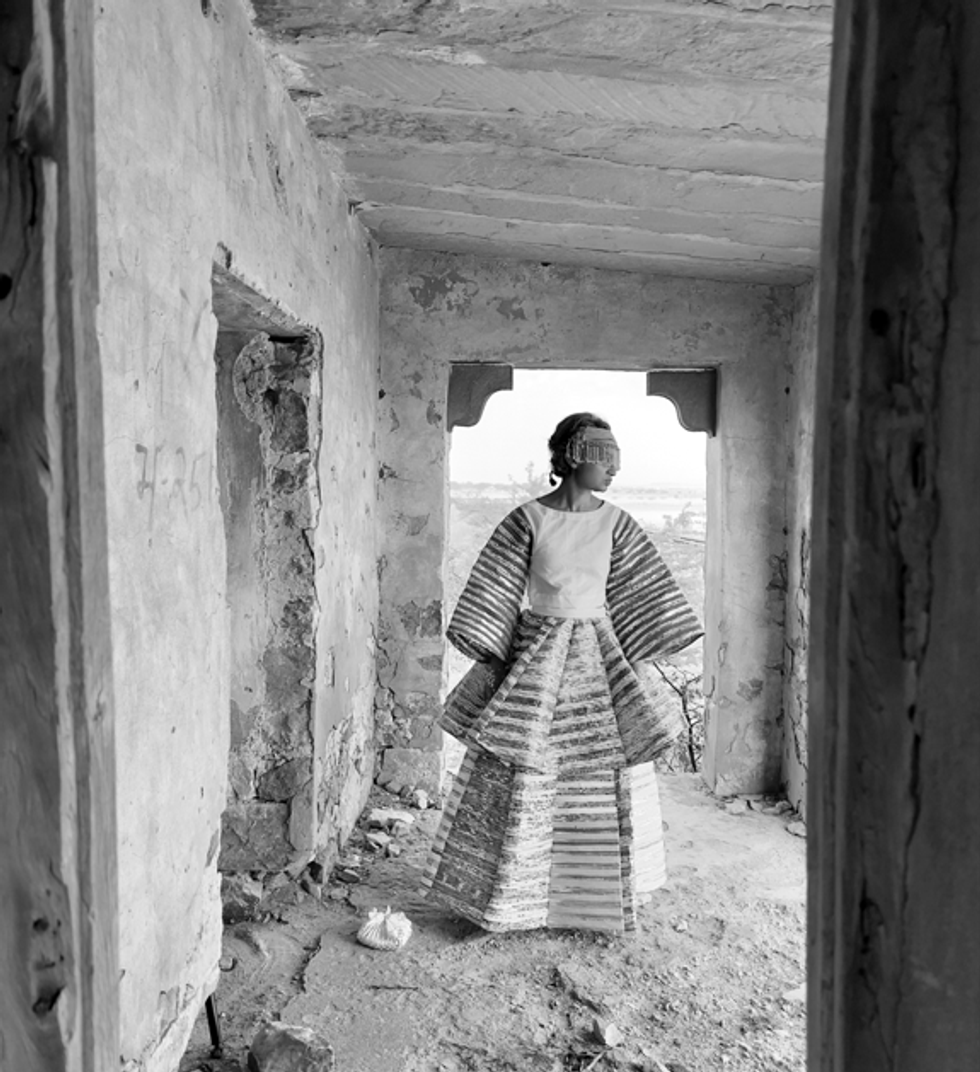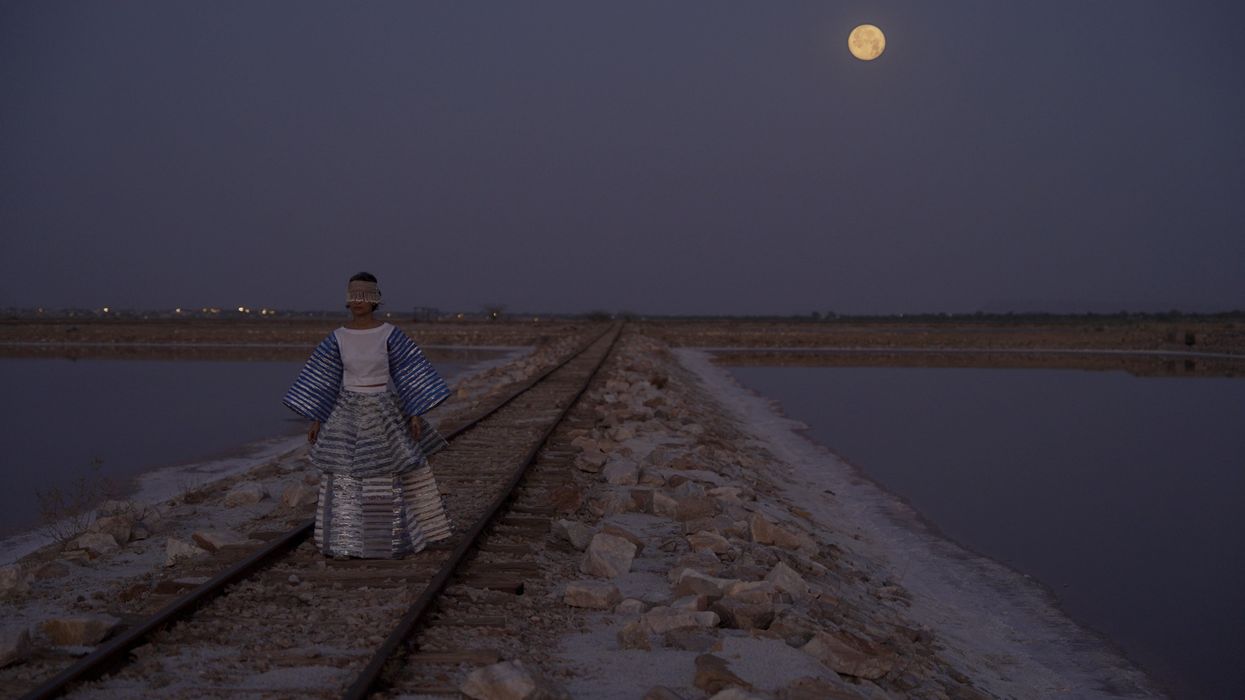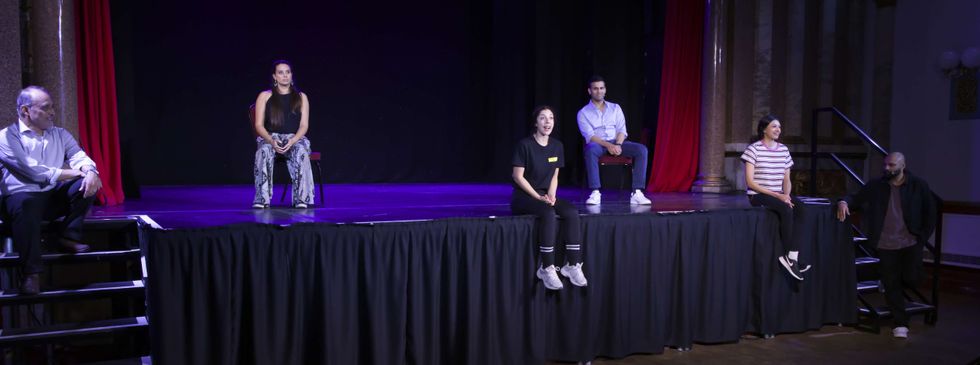A NEW exhibition at Somerset House explores salt’s dual nature while examining its deep connections to imperial history, said the project’s co-curator.
Salt Cosmologies, by Himali Singh Soin and David Soin Tappeser, due to be unveiled on Thursday (20), explores Britain’s ties with India during colonial times.
The multi-faceted show spans Somerset House’s Edmond J Safra Fountain Court with a large-scale installation, combining archival materials, film, sound work and evocative photographs displayed on the newly restored Salt Stair.
“Hylozoic/Desires, a collective formed by Singh Soin and Soin Tappeser, creates multisensory installations that explore colonial histories and ecological crises. They work across various mediums, including woven textiles and ceramics. The collective has used salt as both a material and an archive in their work for several years,” Kinnari Saraiya, co-curator of the exhibition told Eastern Eye. Saraiya, along with Cliff Lauson, curated the project.
The artists’ previous project, Namak Nazar, at Desert X in the US featured a wooden pillar covered in crystalline salt, with speakers that channel prophecies. The piece depicted salt particles as messengers of climate doom while also highlighting their preservative qualities.
Saraiya added that a version of this work will be shown at Somerset House’s historic salt stair, featuring atmospheric sounds of salt particles and field recordings from salt pans they visited while carrying out their research.
Saraiya said, “The project has particular significance for Somerset House, as the building housed government administration and tax offices in the late 1700s, including a dedicated salt office. This historical connection to salt taxation made it an ideal venue for the exhibition.

“The fact that salt required its own office and tax department at Somerset House, with five dedicated floors, demonstrates its historical economic importance. This contrasts sharply with salt’s status as an inexpensive commodity. While the Salt Office at Somerset House had a national remit for collecting British salt tax, and the Inland Customs Line was administered by the India Office, they were theoretically connected through imperial rule.”
An 80-metre long, 2.5-metre-high fabric installation will recreate the Inland Customs Line – a vast colonial barrier of living plants that stretched 2,500 miles across India to control salt taxation. The new artwork uses organically dyed cotton, featuring prints of the original hedge plants alongside chaotic stamps and termite patterns.
Named after the contrasting phrases namak halal (faithful to salt) and namak haram (unfaithful to salt), the installation reflects how this hedge served both as a tool of British control and as a symbol of resistance, with people smuggling both salt and revolutionary ideas across its boundary, according to the artists.
The curator said this historical narrative was previously unknown to her, making the project particularly “fascinating”.
Saraiya, an Indian curator, originally from Mumbai, said, “The exhibition is structured in three chapters: Salt Line, Salt Office, and Salt Stair. The Salt Line installation in Somerset House’s courtyard recreates the Inland Customs Line, a 4,000-kilometre colonial infrastructure built in mid-19th century India. This barrier, also known as the Great Salt Hedge, was constructed to control salt movement and taxation between British-controlled territories and ones that weren’t.

“The barrier stretched across the subcontinent, what is now India and Pakistan, and required thousands of people for its maintenance due to varying climatic conditions. The art installation namak halal/namak haram traces the path of the Great Salt Hedge, also known as the Inland Customs Line. The installation spans 80 metres across the Somerset House courtyard, featuring zigzag metal frames that mimic the design of Wardian cases – small greenhouse-like containers used to transport plant specimens from India to England during colonial times.
“Between these metal structures runs a bar supporting fabric panels, with two pieces hanging on each side, creating a two-sided display.
The entire fabric spans 160 metres and is made from organic cotton, dyed using vegetable dyes and fixed with salt, making salt an integral part of the dyeing process. The fabric is hand block printed using custom-carved wooden blocks, following historic textile printing techniques.”
Saraiya, who joined the project in May last year, added that the dyes used in the printing process were derived from plants and insects found in the original hedge.
“The red dye, for instance, comes from cochineal, tiny insects that breed on prickly pear – an invasive species. One side of the fabric displays colonial botanical drawings, neatly classified in a grid format. The opposite side features a more dynamic, chaotic stamping of the historical British Empire emblem. However, the artists have replaced the traditional British lion with a termite in this design,” she said.
“This termite replacement references a historical event when the hedge was initially made of dry brush, twigs and branches. These materials attracted ants that eventually ate into and demolished the structure, demonstrating how tiny creatures could destroy an entire colonial infrastructure. This destruction led to the hedge being replanted with living plants to ensure its stability.
“The installation also includes the phrase “Salt Issued”, which comes from an original salt tax receipt that was stamped when salt was transported across the customs line.
The exhibition is divided into three chapters, with the second chapter being the Salt Office archive room. This space houses archival material collected during the research, including images and architectural drawings of Somerset House that label the Salt Office and Salt Stair. A notable piece in the collection is the iconic image of Mahatma Gandhi collecting salt at Dandi, highlighting the significance of salt tax protests.
Saraiya, who studied fine art at Arts University Bournemouth, said, “The archive also features bird skins from the Natural History Museum, donated by Alan Octavian Hume, who served as the Commissioner of Inland Customs. Hume, who had a keen interest in botany and birds, was responsible for building the hedge and devised the formula for its plant composition. He created what was then the largest archive of Indian birds. He would collect birds while on his travels across India as the Commissioner of Inland Customs and the birds we have in the exhibition were collected in that region so we're speculating that they (perhaps) nested in the hedge. The exhibition also displays plant specimens from Kew Gardens. The artists will draw on-site on a large map of India showing the line of the hedge. The wooden blocks used for printing the fabric installation are also displayed in this space.”
Saraiya was assistant curator at Baltic Centre for Contemporary Art before joining Somerset House, where she curated Michael Rakowitz's Waiting Gardens of the North, a group show of indigenous artists Stepping Softly on the Earth and Sahej Rahal's Mythmachine amongst others.
The Salt Stair, which was previously closed to the public, will open with this exhibition following restoration work. It features a suspended speaker playing a sound piece. The exhibition includes salt prints, a Victorian image printing process where chemicals are replaced with salt, with gold used in the toning. The artists created a series of six salt prints, some featuring images from their visits to various salt pans worldwide, including the Sambar Salt Lake in Rajasthan.

The Indian artist said, “Some images in the exhibition were AI-generated due to the lack of visual evidence of the original hedge. The artists used written descriptions of the hedge, including accounts of how salt was moved or smuggled across it, to generate these images through AI models. This approach aims to create a visual archive of the Inland Customs Line where none previously existed. At the bottom of the stair, a video shows dashcam footage from the artists’ research journey finding the hedge in India.”
Salt Cosmologies runs from Thursday (20) to April 27 at Somerset House







 The play is written by Tarun Jasani and directed by Mukul AhmedMGT
The play is written by Tarun Jasani and directed by Mukul AhmedMGT





